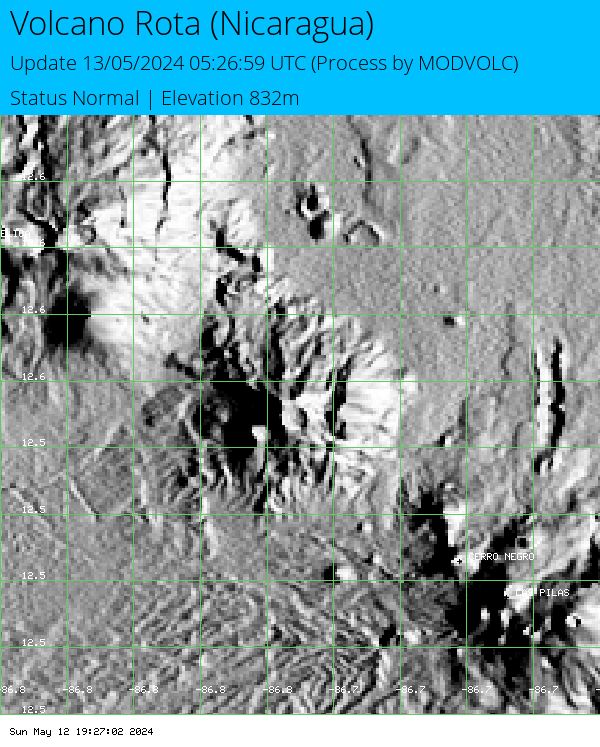Rota (Nicaragua)
Status Normal Eruption Unknown 832m
Stratovolcano (Subduction zone / Continental crust (> 25 km))

The deeply eroded, forested Rota stratovolcano of Holocene age occupies the area between Cerro Negro volcano and the Telica volcanic complex in the central Marrabios Range. The 832-m-high volcano, also known as Orota, is truncated by a 1-km-wide circular crater whose rim is lowest on the southern side. The latest eruption from Rota produced thick andesitic lava flows from a NE-trending fissure NW of the summit. No historical eruptions are known from Volcán Rota, and Williams and McBirney (1965) considered the volcano to have been quiescent for many centuries. Seismic swarms occurred in 1986, 1989, and 1992. Two small NNW-SSE-trending lava domes, El Bosque (also known as Lomas San Ignacio del Bosque or Cerro Ojochal) are located on the plain 2 km north of the flank of Rota. They were constructed along the same trend as other eruptive fissures that extend transverse to the Marrabios Range volcanoes. An extensive lava field in this area was erupted from numerous small cones and maars.
The low, forested Rota stratovolcano rises above fields to its west in the area between Cerro Negro volcano and the Telica volcanic complex. A 1-km-wide circular crater whose rim is lowest on the southern side lies at the summit. The latest eruption from Rota produced thick andesitic lava flows from a NE-trending fissure NW of the summit. No historical eruptions are known from Volcán Rota, although seismic swarms occurred in 1986, 1989, and 1992.
Photo by Lee Siebert, 1998 (Smithsonian Institution).
Last updated 2019-08-04 00:28:03

Camera
Latest activity
Aww Error :(
Data not available